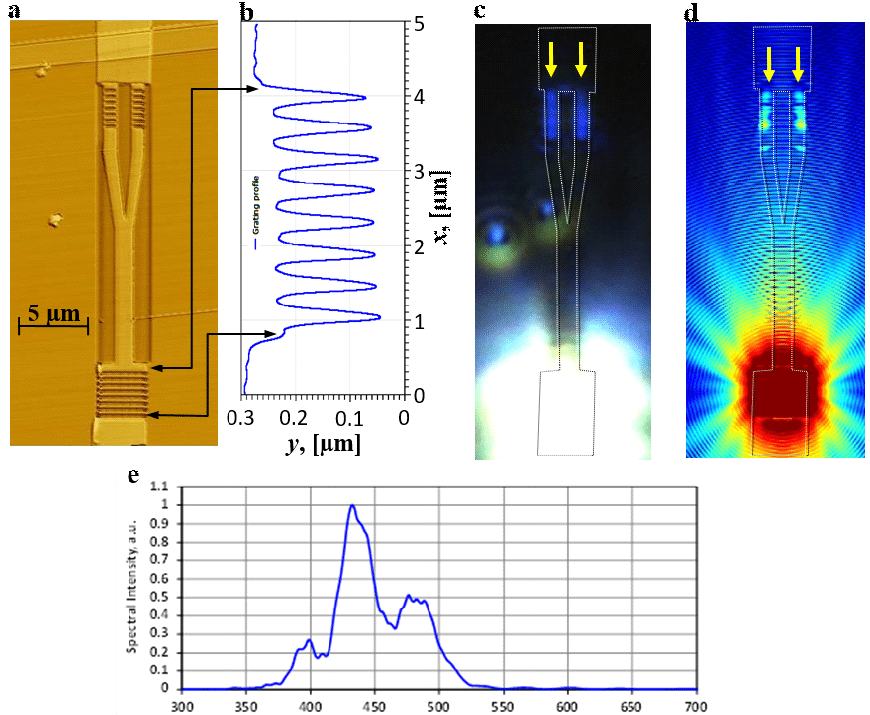
Peptide Nanophotonics: from Optical Waveguiding to BioChips
2Electrical Engineering, Holon Institute of Technology, Holon, Israel
Bionanophotonics is a wide field where biotechnology, fundamental physics, advanced optical materials and nanotechnology are combined and result in development of implantable optical biochips. Light waveguides, using silk fibers or synthetic bioabsorbable polymers, are their main components.
In this work a novel concept of integrated biooptics applying new planar and elongated bioinspired peptide materials and new nanotechnology are proposed. It combines bottom-up controlled deposition of peptide wafers of a large area and top-down high resolution patterning for fabrication of peptide optical waveguides (POW) and peptide-based optical devices. POW demonstrate high optical transparency and optical confinement, effective linear and nonlinear passive light waveguiding in a wide optical region covering UV-visible and near infrared spectra.
We observe a deep modification of POW optical properties by reconformation of their biological secondary structure from native a-helix to b-sheet which is followed by appearance of strong visible fluorescence and unexpected transition from native passive optical waveguiding to active waveguiding.
Found passive and active light waveguiding,1nonlinear optical2, electrooptical effects and visible fluorescence3 in these bioinspired peptide nanomaterials, switchable multifunctional optical properties combined with original biocompatibility make these POW attractive for application in implantable biophotonic chips towards health monitoring, biomedical diagnosis, light-activated therapy and optical communication with embedded biosensors.
Figure. 1x2 power Y-splitter with grating couplers fabricated in tri-phenyalanine peptide FFF- wafer .

References
- A.Handelman, B. Apter, T. Shostak, G. Rosenman, Peptide Optical Waveguides, J. Pept. Sci, 23, 95-103, (2016).
- A. Handelman, B. Apter, N.Turko, G. Rosenman. Linear and Nonlinear Optical Waveguiding Effects in Bio-inspired Diphenylalanine Peptide Nanotubes, Acta Biomater, 30, 72–77(2016)
- 3. Handelman, N.Kuritz, A. Natan, G. Rosenman, Reconstructive Phase Transition in Ultrashort Peptide Nanostructures and Induced Visible Fluorescence, Invited Feature Article, Langmuir,32(12), 2847–2862, (2016)
Powered by Eventact EMS